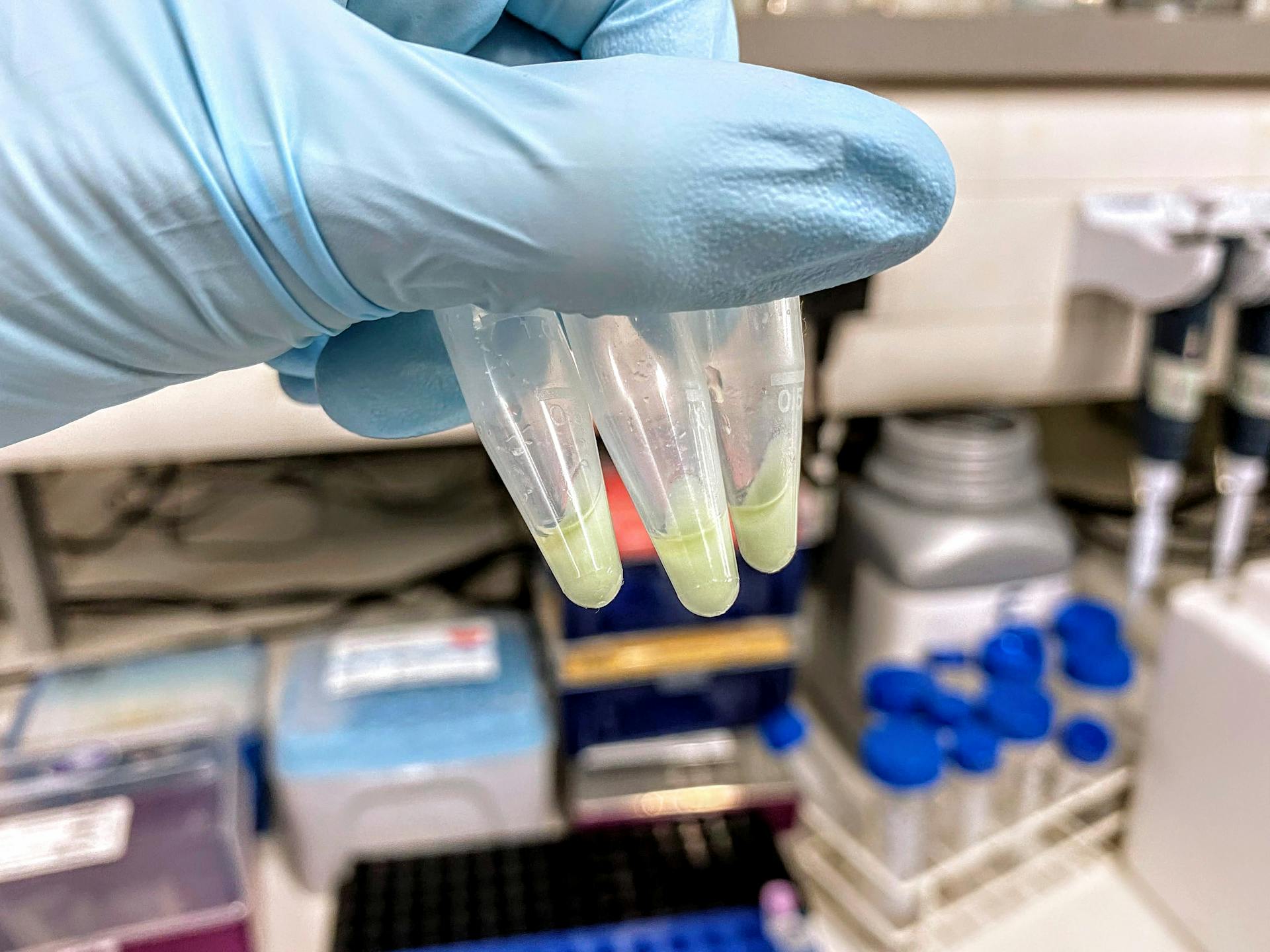✍️ Author: Dr Eleni Christoforidou
Home
Bacterial culture leftovers.
A Day in the Lab: Rapidly Amplifying Genes with Bacteria
🕒 Approximate reading time: 2 minutes
Today's lab agenda revolved around the intriguing task of disrupting bacteria to extract a gene I had previously inserted into them. The tubes featured in the picture below are remnants of a bacterial culture that I had been nurturing overnight.

Bacteria are genetic storehouses that hold more than just their chromosomal DNA. They also contain a kind of DNA known as a plasmid. To achieve my goals, I genetically engineered a plasmid to carry a specific human gene sequence. My objective was to replicate this human gene rapidly in large quantities. To accomplish this, I employed a method known as "plasmid preparation". Bacteria are prolific reproducers, and thus they duplicate their plasmids multiple times, enabling the rapid production of considerable amounts of the human gene overnight. Following this, I lysed the bacteria - meaning I used chemicals to rupture them open. This released the plasmids, which I then purified and utilised in subsequent experiments.
Today's session once again highlighted the remarkable utility of bacteria in genetic research and the fascinating methods we use to manipulate them to our advantage. These small organisms, as simple as they may seem, continue to play a significant role in advancing our understanding of genetic material and its applications.